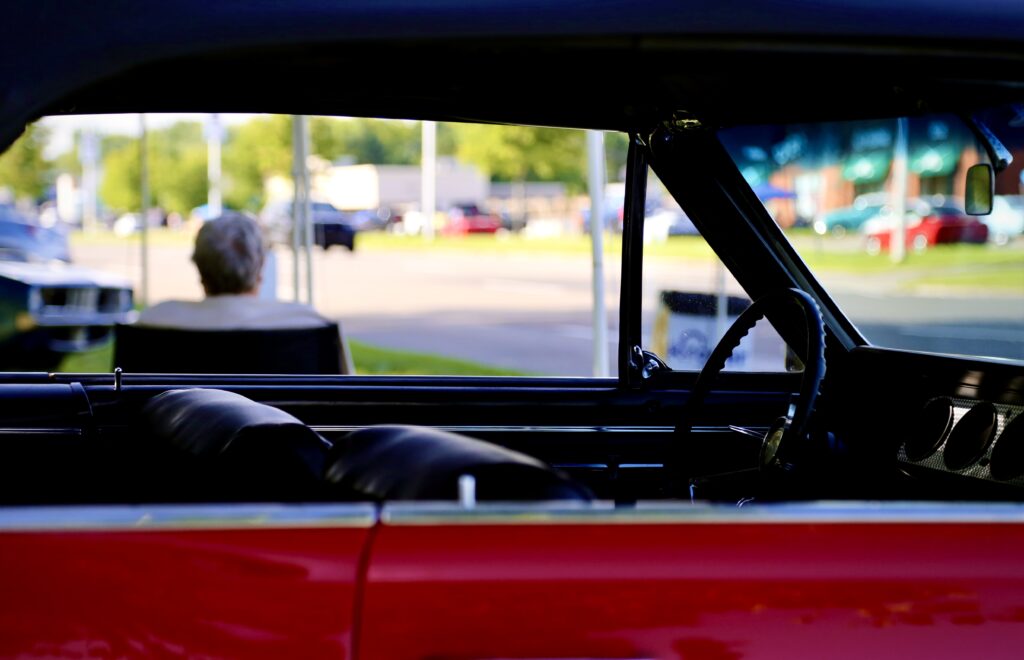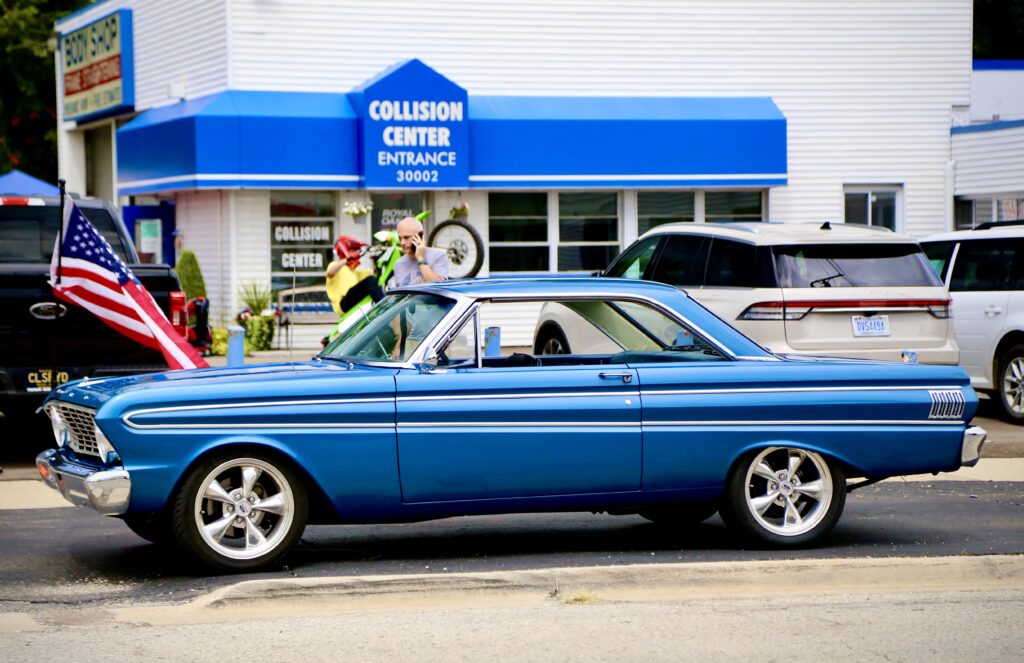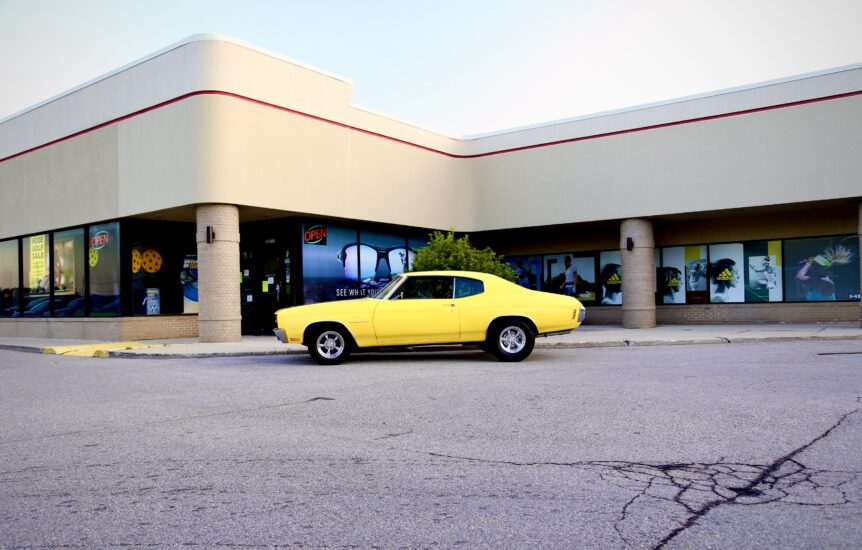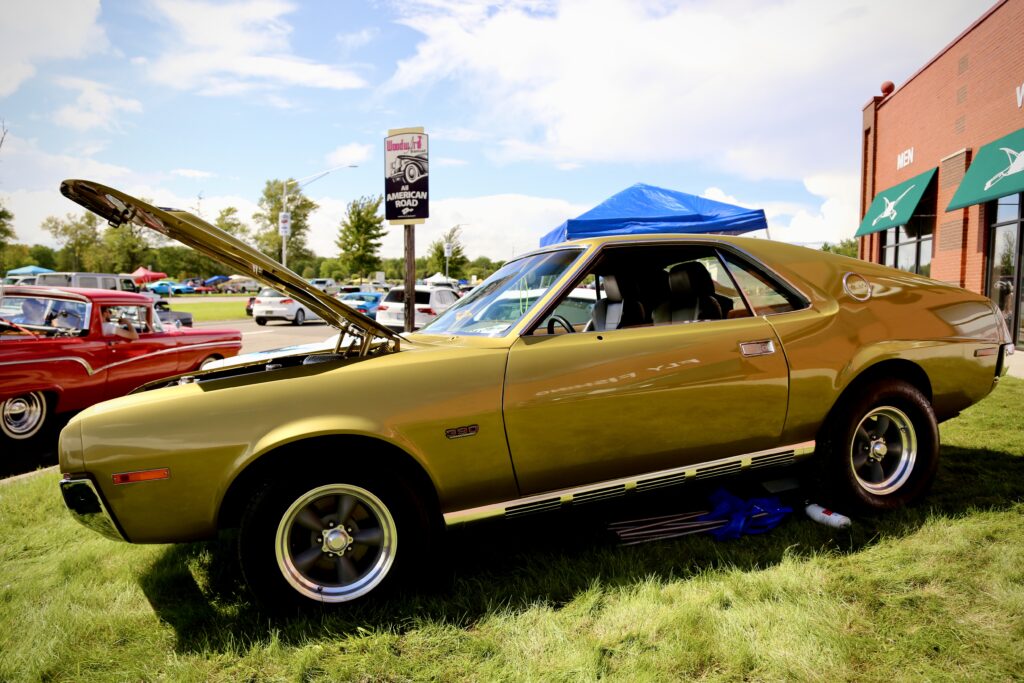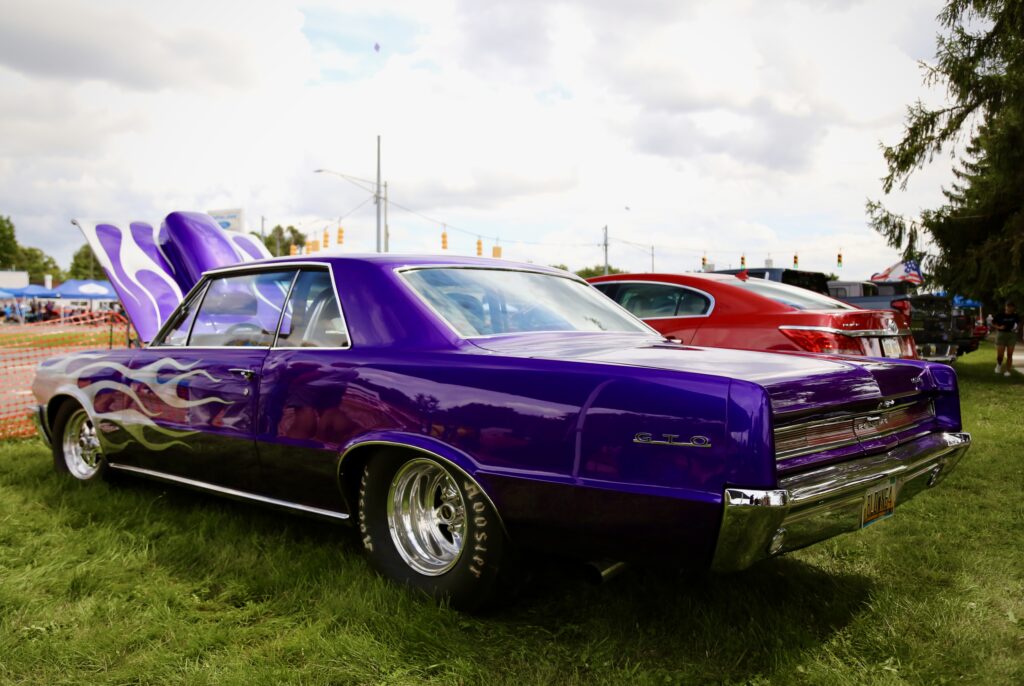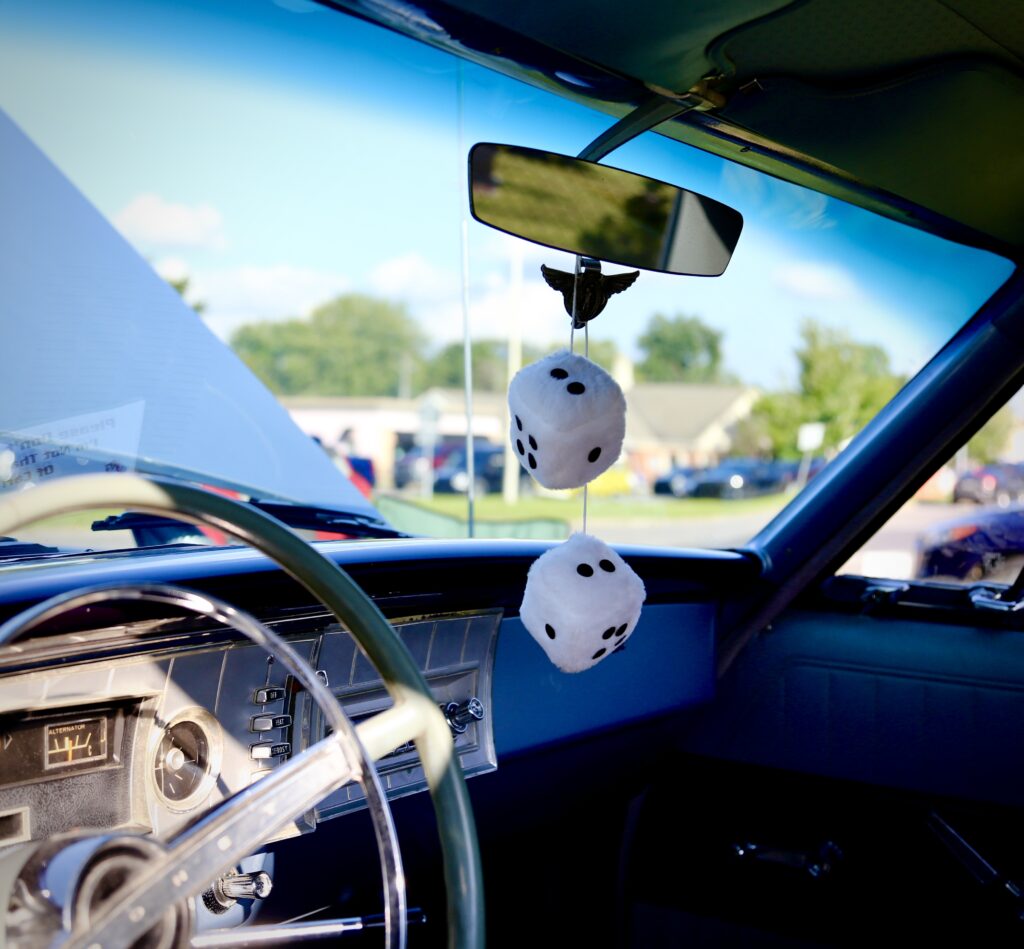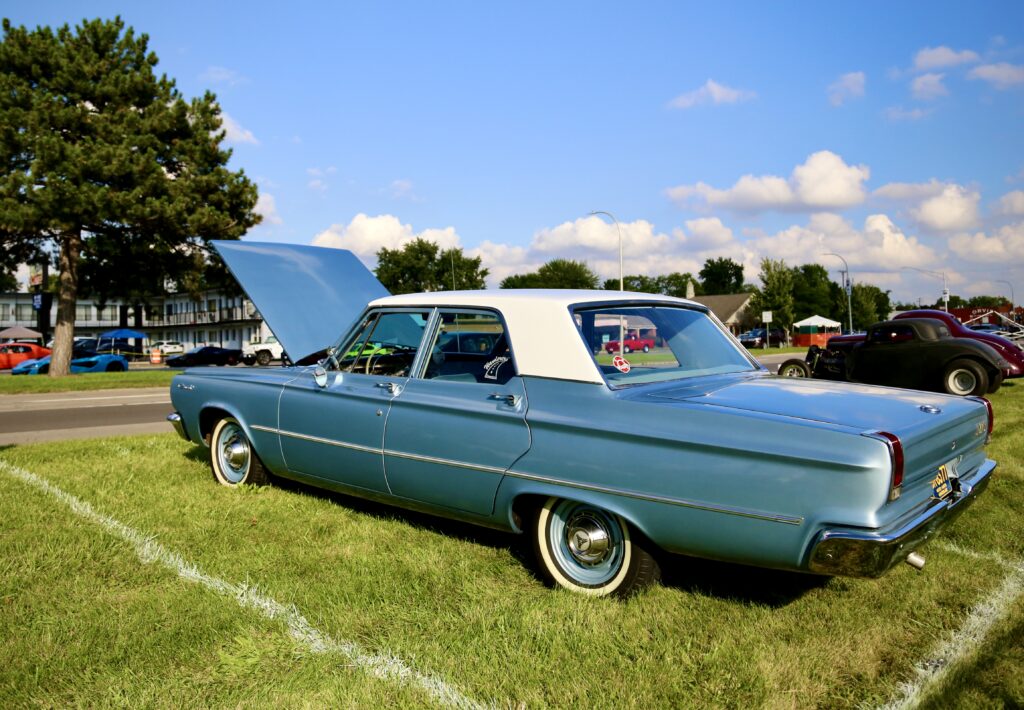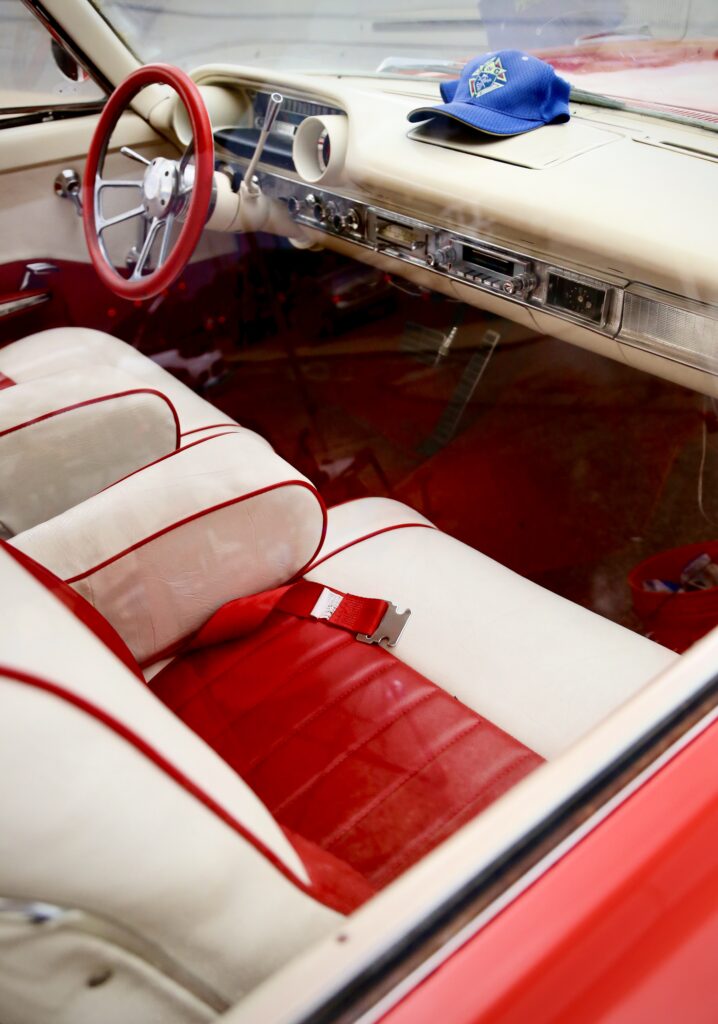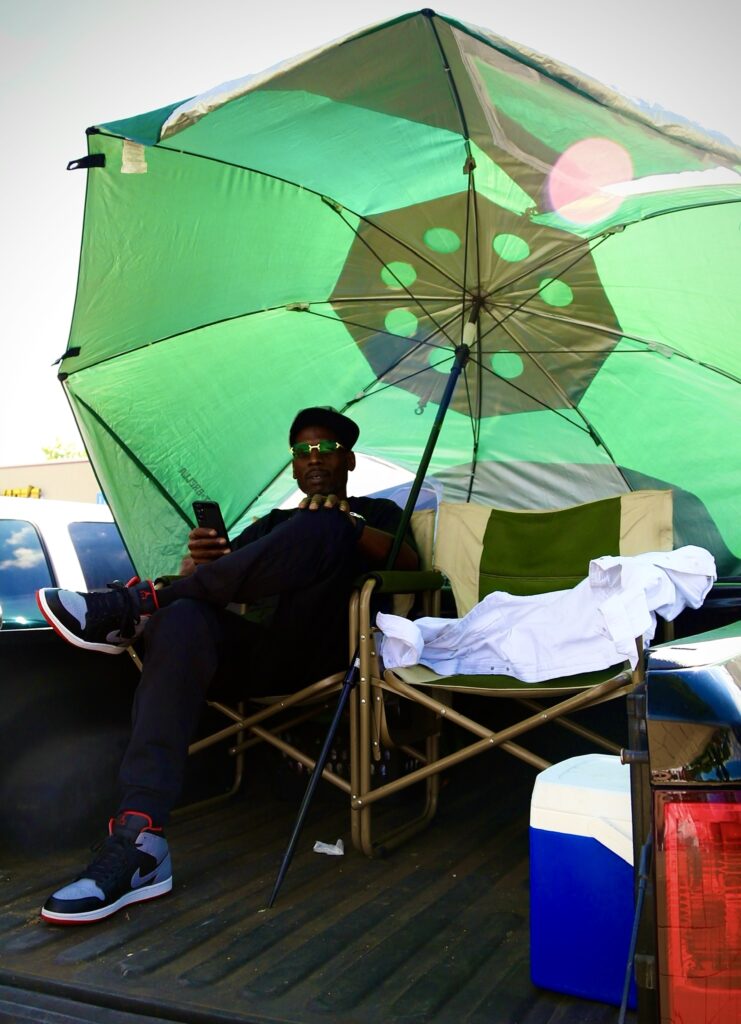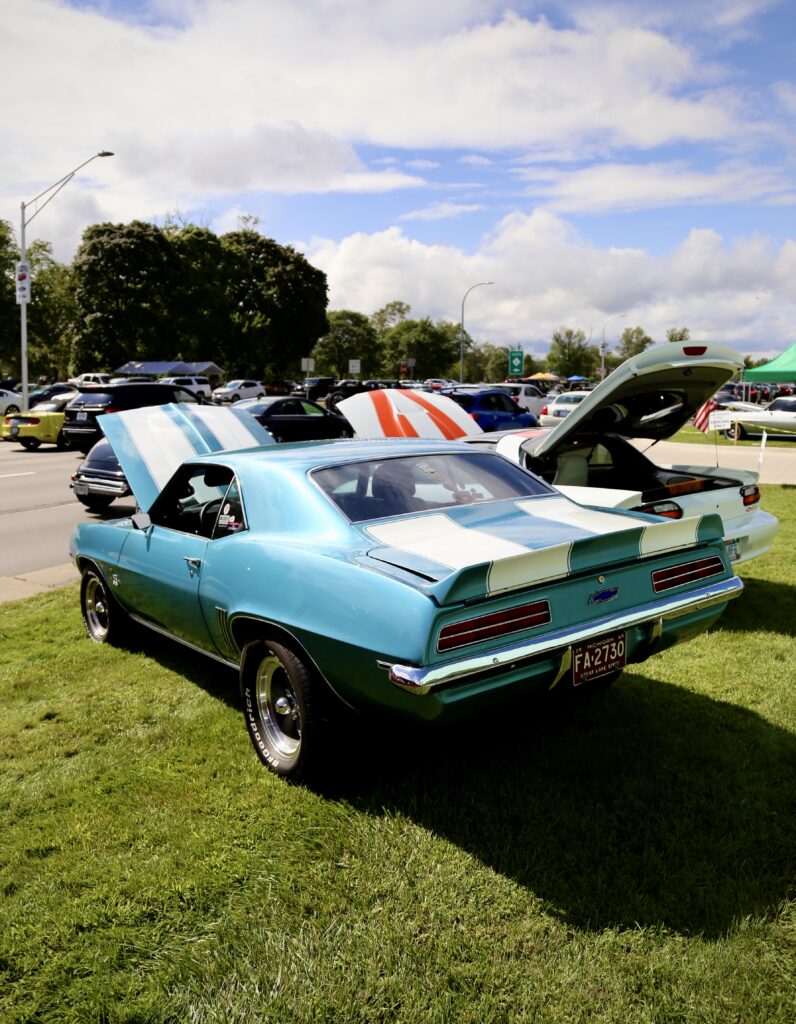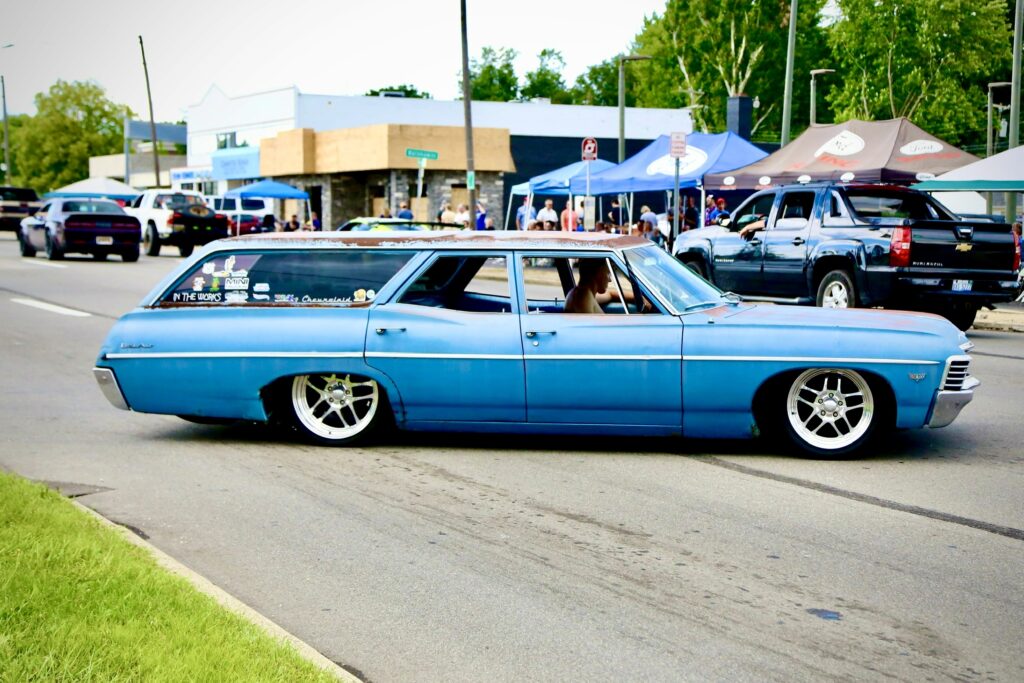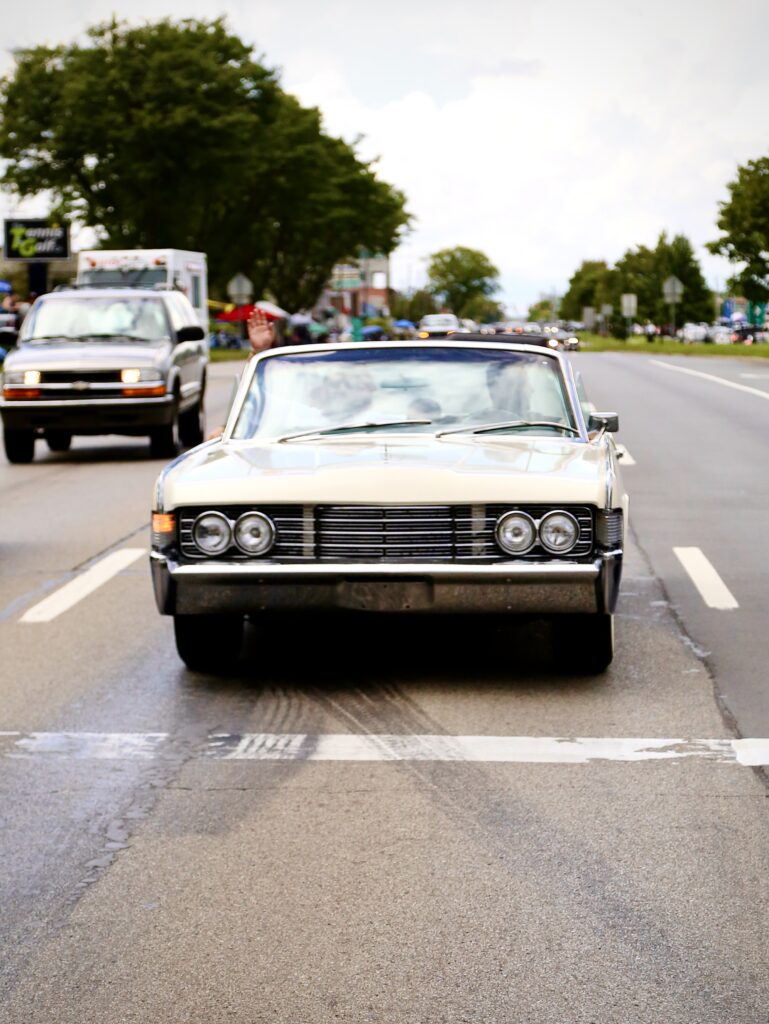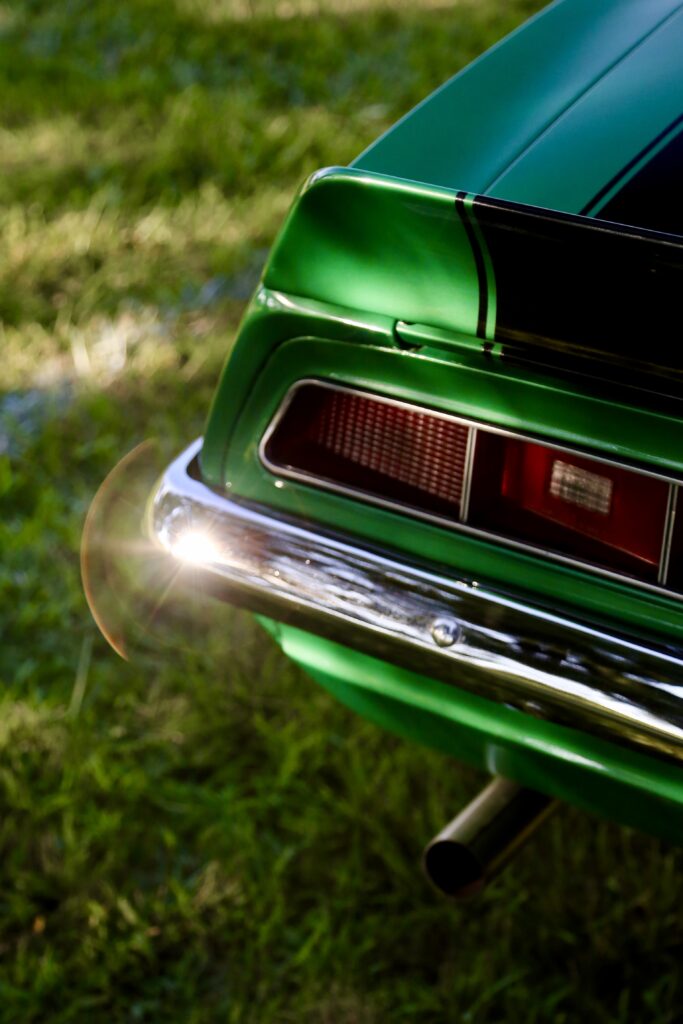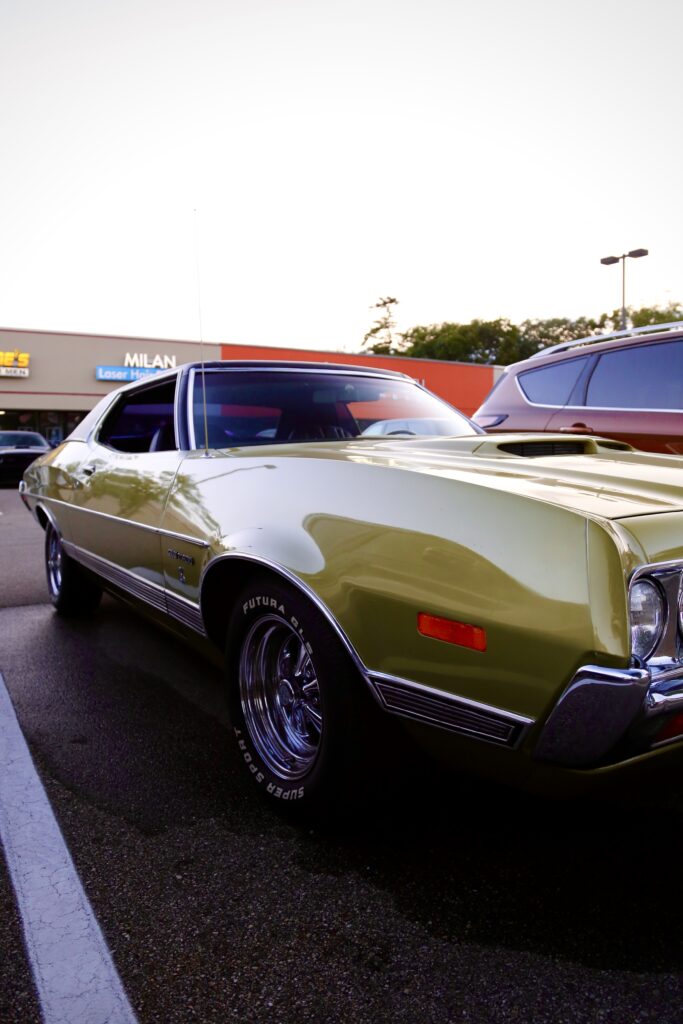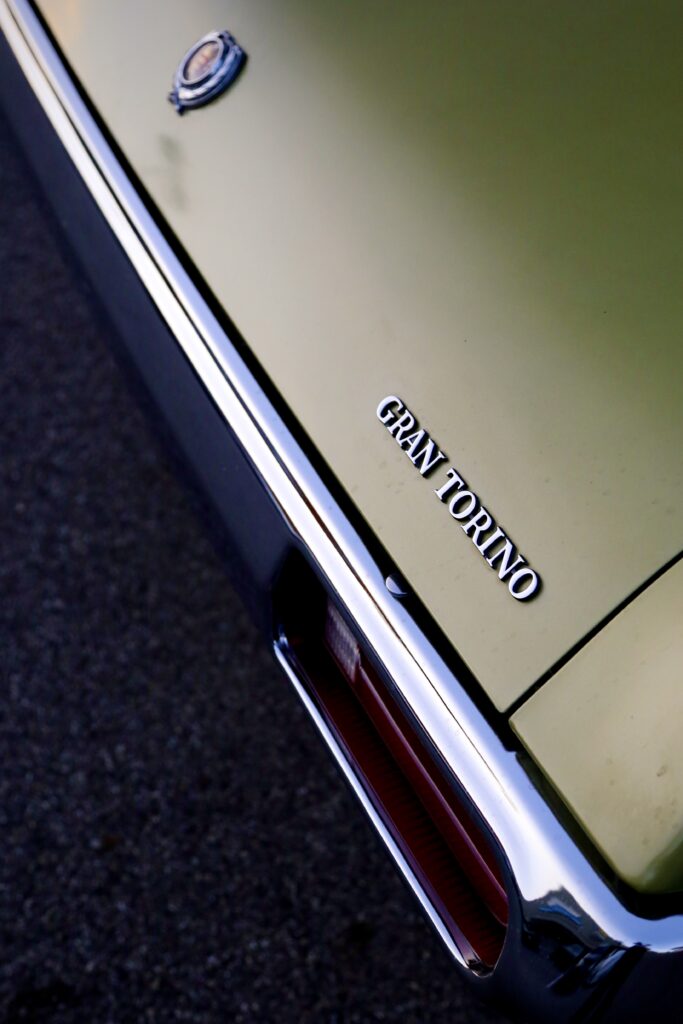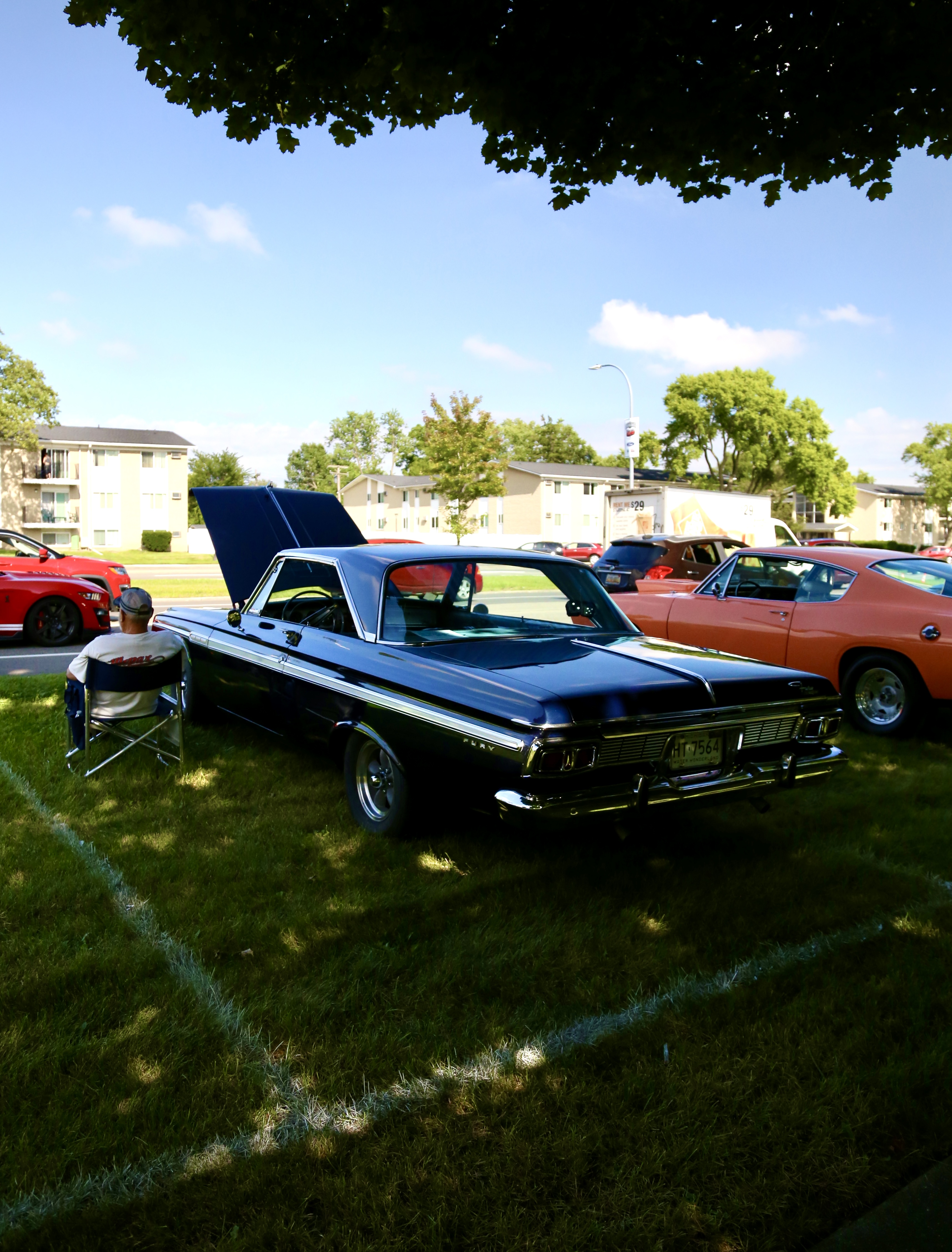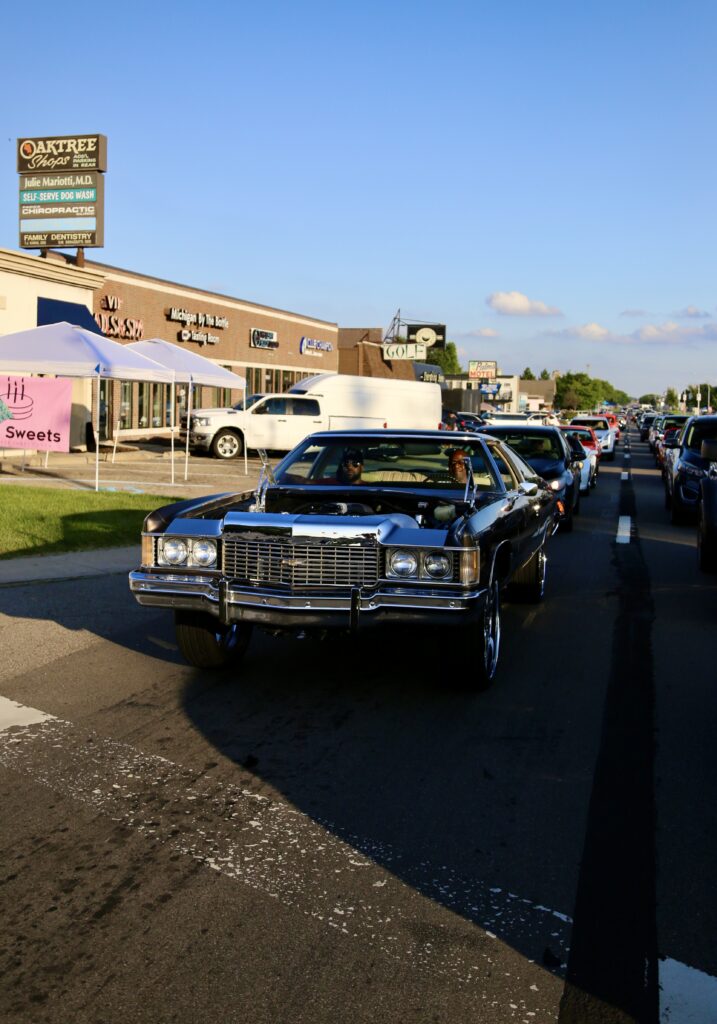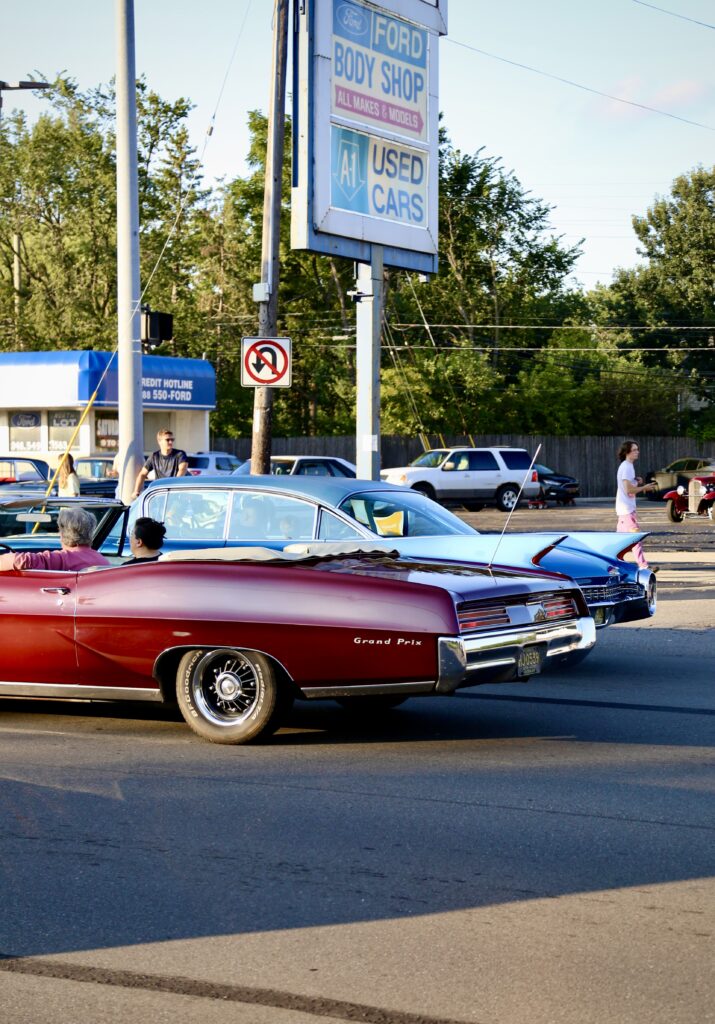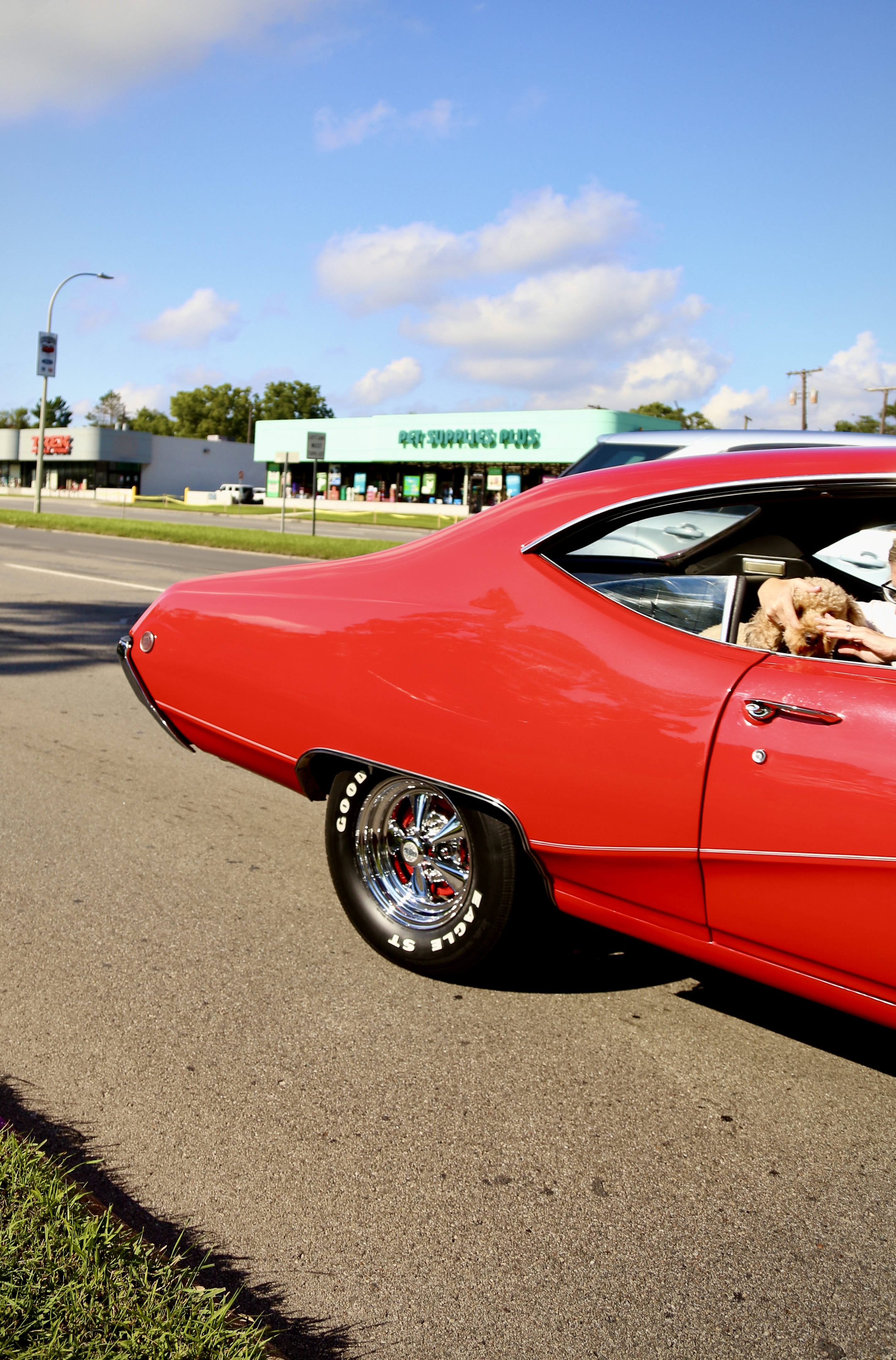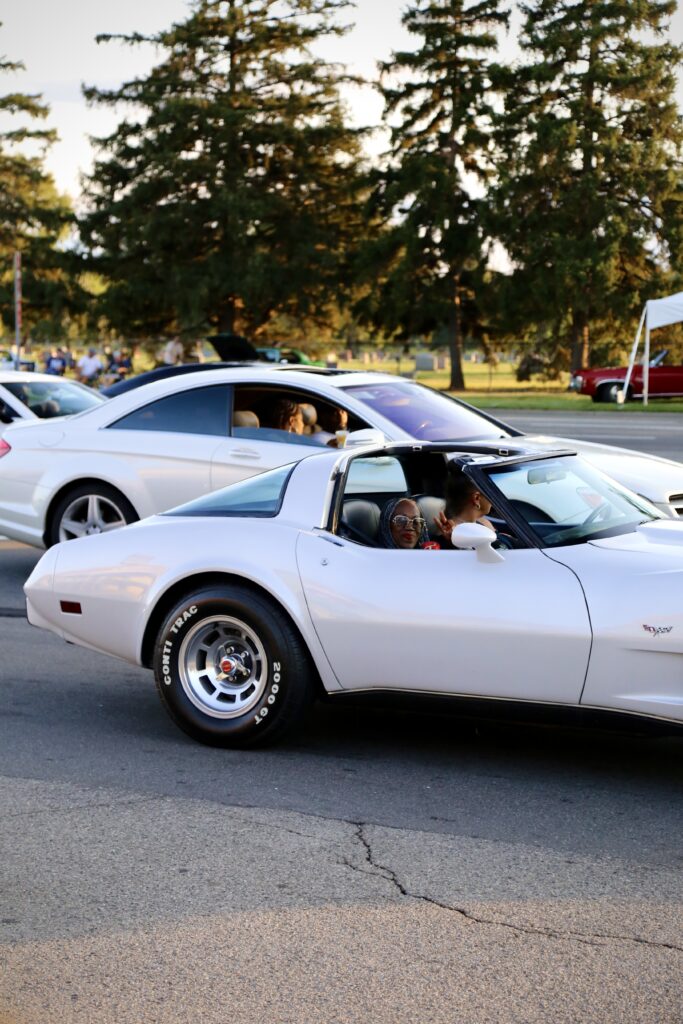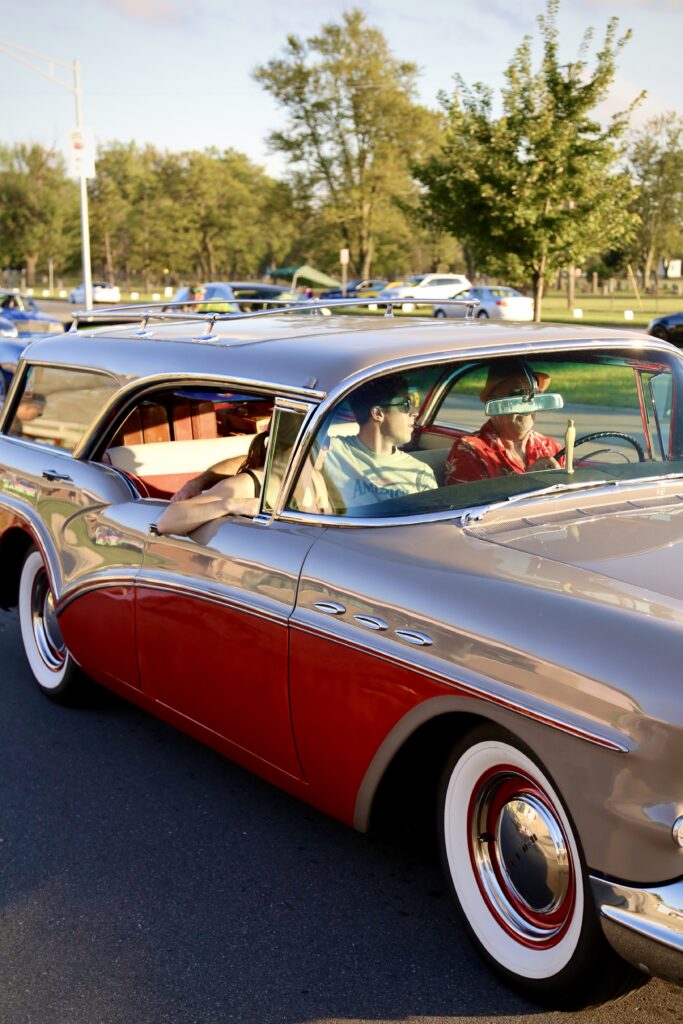A photo story on wheels.
The annual tradition of the Motor City’s Woodward Dream Cruise jumpstarted in 1995 as a municipal fundraiser for the city of Ferndale. Since, the event has evolved into action as one of the biggest car-crazed events in the world, taking place the third Saturday of August each year. This year, the automobile lover’s paradise crossed its thirtieth finish line, drawing calibers of car enthusiasts—all of whom wanted a taste of the action.
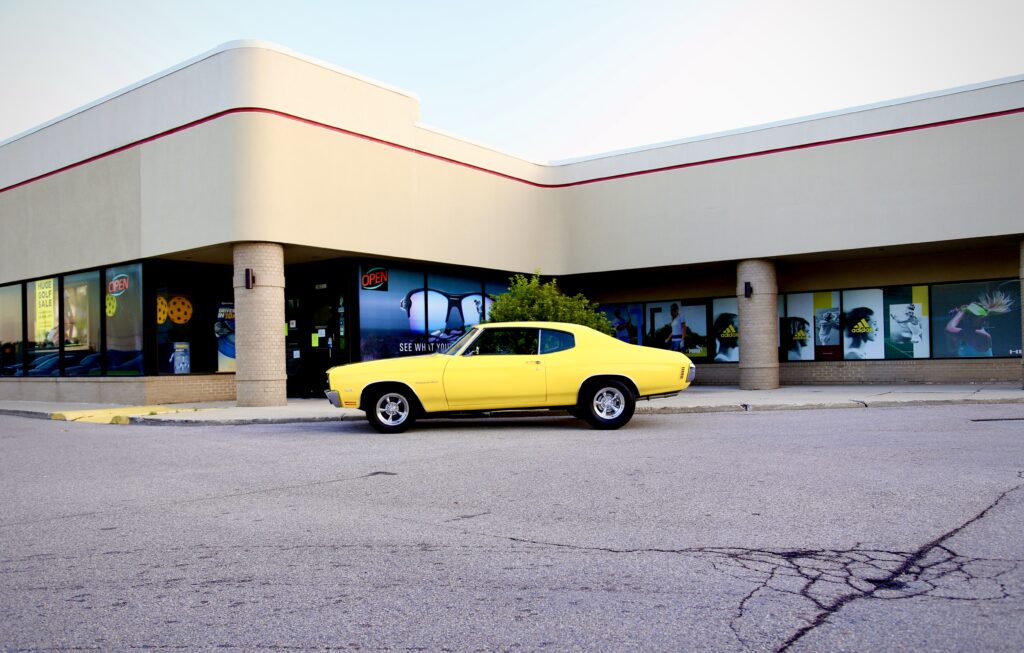
In 1909 Woodward Avenue became the country’s first mile of concrete-paved highway. Over a hundred years earlier in 1805, the north-south state trunkline highway was platted by Judge Augustus B. Woodward, along with four additional principal Detroit avenues. Inspired by the hub-and-spoke paradigm designed by French-born architect and civil engineer Pierre Charles L’Enfant, whose urban plan derived from European capitals like Paris, Judge Woodward adopted L’Enfant’s hub-and-spoke design when faced with rebuilding the city following Detroit’s Great Fire the same year. L’Enfant’s influence helped Detroit earn the nickname “Paris of the Midwest” compounded with Detroit’s French colonial roots and bustling economy and culture in the early 20th century.
In 1791 L’Enfant implemented the hub-and-spoke model in Washington D.C. when President George Washington commissioned L’Enfant to design the nation’s capital. The hub-and-spoke paradigm is a system of connections arranged like a chariot wheel where traffic proceeds along the spokes and connects to a central hub. In Detroit, Campus Martius Park is the heart, or central hub, of it all. Woodward Avenue, the avenue named after its founding father, followed the preexisting Saginaw Trail—a Native American trail linking Detroit to northern Michigan cities including Pontiac, Flint, and Saginaw. Decades later, Woodward Avenue remains a main artery for commuters driving from point A to point B with mile rounds spliced in running east and west.
During the muscle car heyday, Woodward Avenue was studded with body shops, car dealerships, themed motels, and gas stations hosting punchy, hand painted signs like that of the now retroesque Palms Motel. Longtime Metro Detroit suburbanite, Mary Pelton, recalls Friday night Woodwarding during her disco days. In the late sixties and early seventies, “it was the thing to do. Saturday nights were reserved for dancing but Woodwarding consisted of driving up and down Woodward Avenue, watching cars breeze by, being seen, and being a part of the scene. It was a fun and free social thing to do,” says Pelton, who drove a dark green Camaro with white leather interior in her early twenties around town.
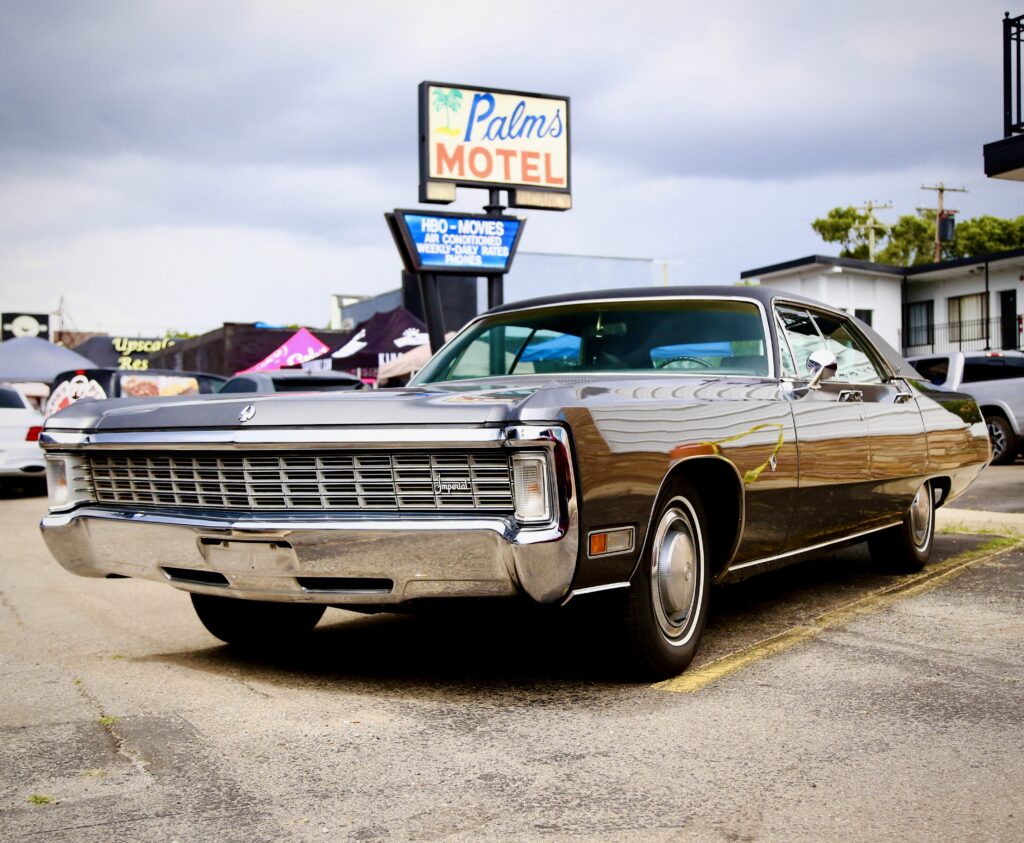
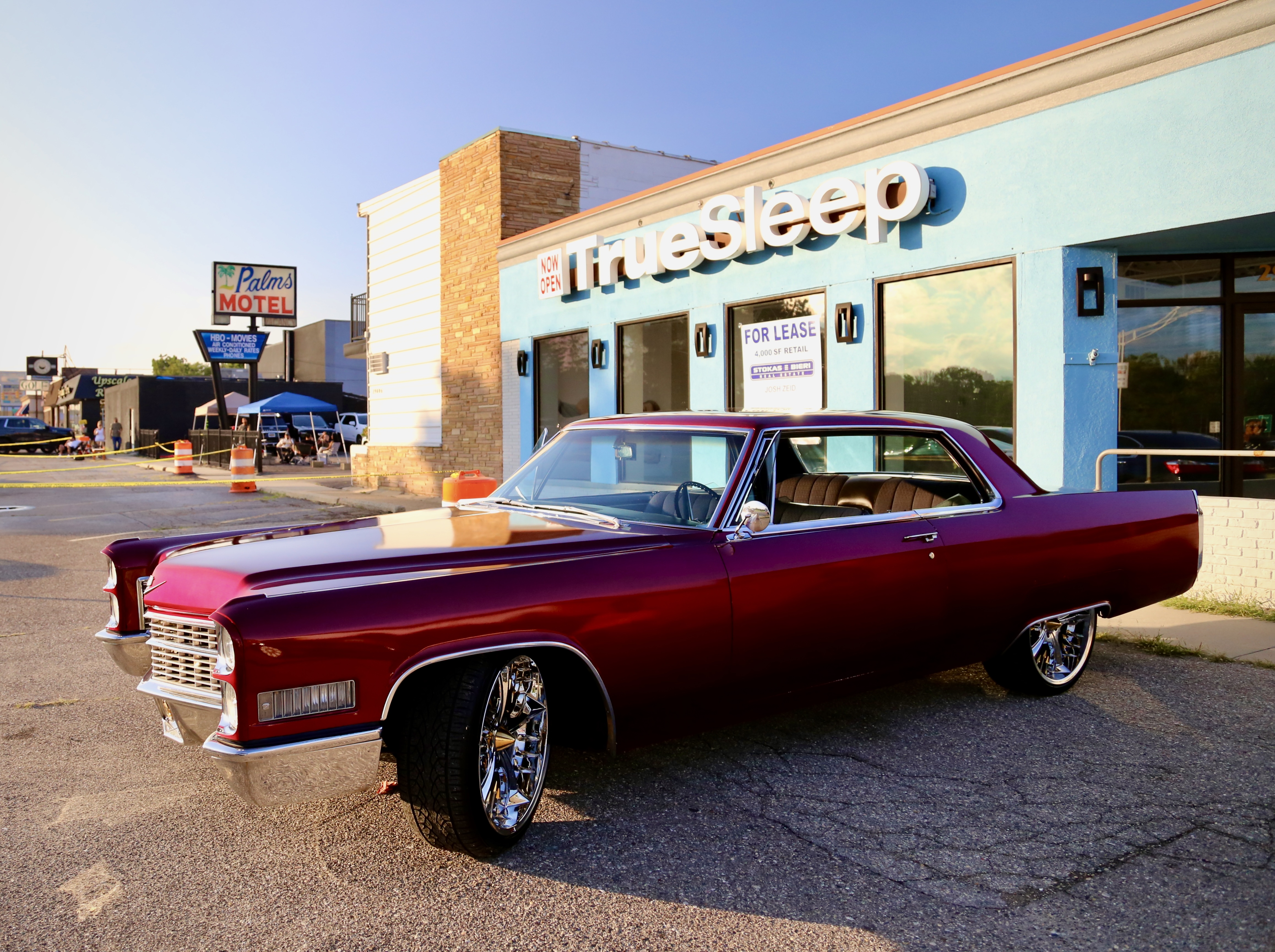
Today, Woodward Avenue hosts a suite of flavorful businesses, some nostalgic, who’ve kept the spirit of the Motor City alive. During the Dream Cruise, Dutch Girl Donuts, located on Woodward north of Seven Mile, pumped out treats extra early and late, selling a sugary blend of fuel for early birds and night owls celebrating the cruise. Northbound, Hunter House, a burger joint born in 1952, slung more sliders than usual. Soft serve windows drew the longest lines of the season. Car club stickers and flags, fuzzy dice, and perfectly preserved interiors with pops of piped upholstery offered Americana kitsch. Microfiber cloths were ready for the slightest sprinkle of rain. Onlookers filled the sidelines to gaze, some of whom were only inches from the street itself holding cameras—myself included. Spectators brought provisions to sustain them from day until night. One man outfitted his truck bed with a large beach umbrella, chairs, and cooler, retrofitting a private viewing deck while camped out for the day.
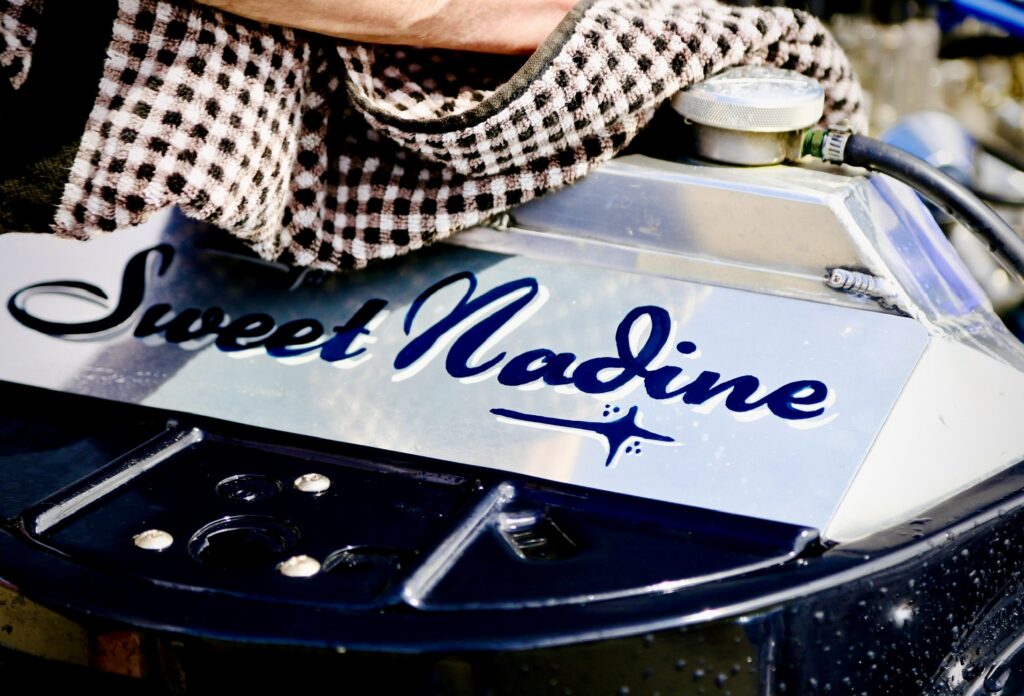
Although the Dream Cruise festivities formally last just a day, Metro Detroit suburbanites are quick to point out that the fueled festivities start way before August. Cruisers, as they call them, rev their engines up and down the iconic M-1 highway months ahead of schedule and typically taper off come September. Nevertheless, you never know when a fleet of vintage cars will buddy up next to one another, or when a solo driver will take their classic car out for air, cruising up, down, and around Michigan Lefts on Woodward Avenue as a favorite pastime.
Whether a Metro Detroiter is a fan of the Dream Cruise or finds themself inconvenienced by the hullabaloo, the car collector showcase elicits an average of nearly a million attendees while embodying Detroit car culture across the eras. This year’s Dream Cruise, which took place on August 16, was no exception. Drivers, across generations, paraded high-octane vehicles and flaunted the best of Detroit’s automotive heritage for all to see. The day offered colorful eye candy galore. Brilliant blue skies laced with clouds supplied next-level dreaminess. Chrome glistened, paint jobs gleamed, and drivers welcomed glittering stares. The summer sun beat down, causing hot rod motors to sizzle. Drivers performed illegal burnouts, despite the possibility of ticketed consequences, to entertain cheering crowds, leaving their special marks on the day.
In American culture, select objects are associated with pure patriotism—no synthetic stuff, please. Apple pie, baseball, and American-made automobiles. In the early 1920s, thanks to the accessibility and affordability of Henry Ford’s Model T, more than fifty percent of the world’s registered cars were Fords. Ford’s dream of creating a universal car came true with mass production and fervent demand. The spirit of American-made, Detroit-born goods reigns true today and roared during the Dream Cruise.
Considering the time, money, and emotional investment classic cars require from their caretakers, it’s no surprise classic car owners are gassed to share (and swap) stories. Before introducing his 1972 Bright Green Gold Gran Torino, Jeff Borja, a retired Metro Detroit school teacher, starts with, “well, it’s a love story.” At the age of fifteen (prior to 1947, a person could obtain a license at the age of fourteen in Michigan), Borja got his first car. It was a black on black Gran Torino. Decades later, Borja’s love of Ford Gran Torinos blazes. “The rest is history,” Borja says while eyeing his prized possession.
Glynn Robinson is the owner of a zippy yellow 1970 Chevelle customized with black racing stripes from front to back. For Robinson, his bumblebee ‘70 Chevelle has been, and always will be, his favorite car. After investing a year’s worth of work and installing a new motor, Glynn named his Chevelle in honor of his mother Hunny. His vanity plate reads 1 HUNNY. Robinson says, “it brought tears to her eyes,” when his mother glanced upon her namesake chariot for the first time.
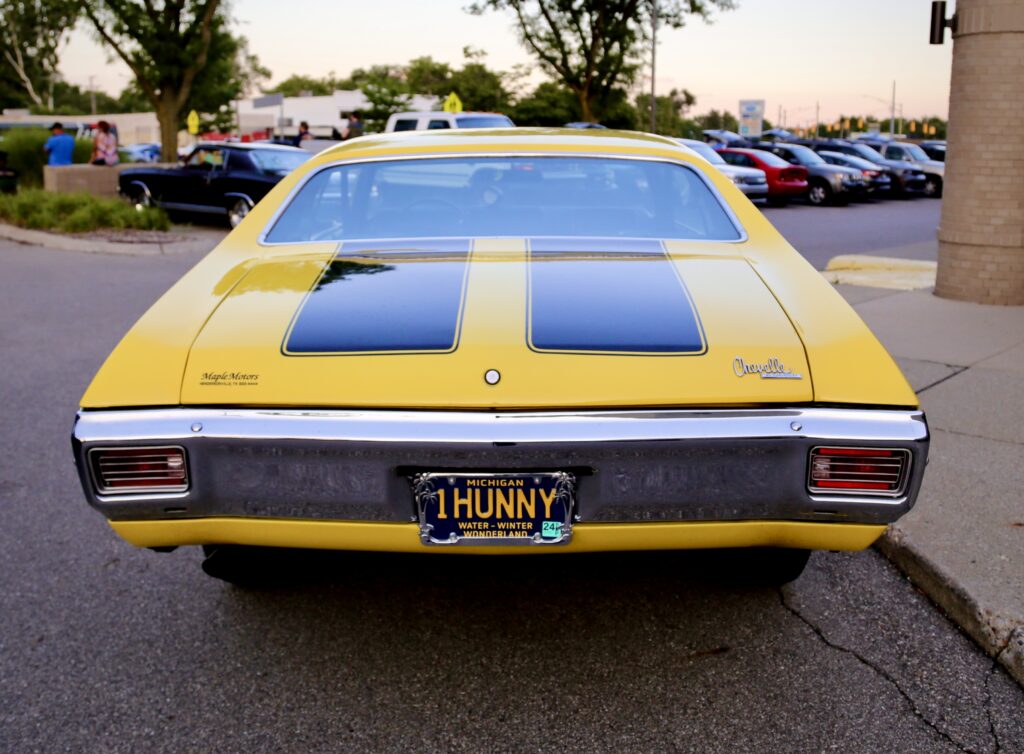
Personal stories such as these, though a drop in the bucket (I could only interview so many people before the day ended, and no matter who I stopped, every cruiser had a unique narrative to share), illuminate the sentimental value classic cars add to their owner’s lives. Additionally, the blanketing impact the auto industry has stamped into generations of Michiganders (many of whom work for, or worked for, the Big Three) reveals the varying degrees of connection Metro Detroiters have to the auto industry whether firsthand or secondhand through family and loved ones.
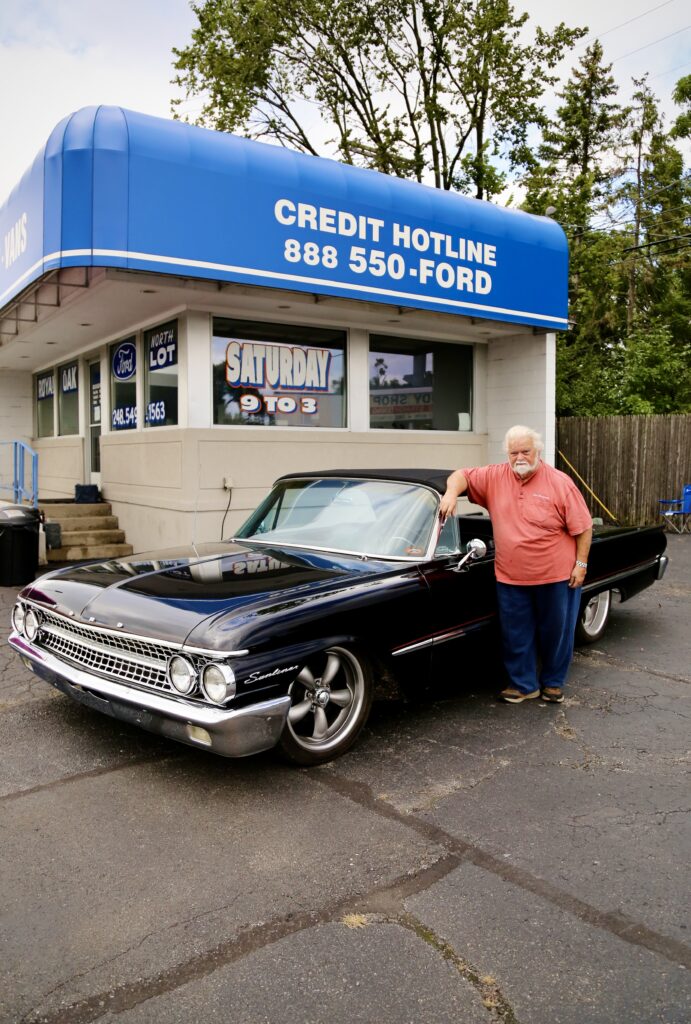
Thomas Franzel, the owner of a 1980 Plymouth Volare, had his automobile’s provenance and original “New Car Purchase Order” written up by the Tubbs Brothers dealership in Sandusky, Michigan, framed for a quieter form of storytelling. Franzel is a retired veteran living in Sterling Heights. The Volare, originally purchased by Franzel’s cousin’s husband Wayne Rumptz, sat in storage for twenty-six years after Rumptz failed to recover from a stroke. Franzel calls the Volare an unrestored “Mopar survivor,” a term used to describe an original Chrysler Corporation vehicle with its original paint, interiors, and powertrain, showcasing what Mopar cars looked like when they left the factory. Franzel’s Volare is a time capsule revealing an authentic glimpse into the past. Upon closer inspection, Franzel realized the car’s body panels were made at Chrysler Warren Stamping where his father worked as a die setter for thirty-eight years. Coincidentally, the car was built at Dodge Main in Hamtramck where his uncle worked for thirty-nine years.
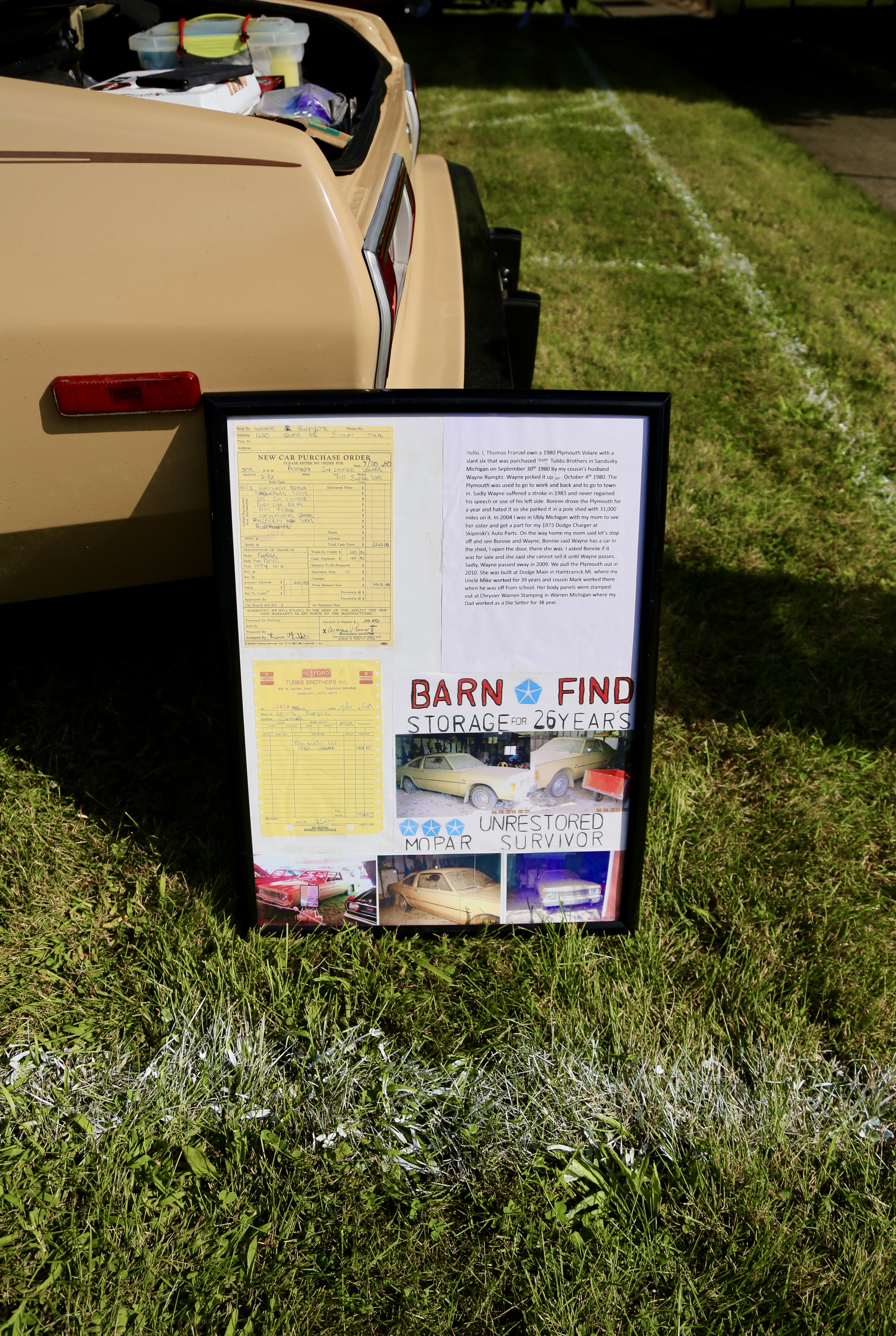
Jim Hart owns a black 1968 Camaro. Although, “the matte black is temporary,” says Hart. The vintage Camaro patiently awaits a fresh coat of Le Mans Blue paint. “It is a special order color,” Hart shares. Hart proudly belongs to generations of auto industry workers. However, adopting an abandoned Camaro in the eyes of his Ford loyal family put Hart in the hot seat. “My grandma, mom, dad, and brother don’t love that I drive a Chevy. I’m a Ford guy who kind of tripped into this,” Hart adds. “My grandma was a Ford world headquarters cleaner, my mom worked on the line, my father was a design engineer, and my brother is a mechanical engineer, all with Ford.” Today, Hart runs a small shop specializing in building medical lasers, but cars are his passion. “I love anything with a motor,” Hart adds.
After Hart’s uncle purchased a house in Stockbridge, Michigan, Hart found the ‘68 Camaro sitting in a field collecting water. Thankfully, the car’s spare parts were practically under his nose, stored in the property’s garage. Hart estimates he’s spent hundreds of hours restoring the Camaro. “A lot of time was spent redoing what I did wrong,” he admittedly laughs. Nevertheless, Hart’s hard work paid off; restoring the car over the years became a father and son project. Hart’s son lives in Arizona but, “he can have the car whenever he wants. It’s his. I’ll move on to something else,” says Hart.
Detroiters value smart engineering, effective design, and good taste. For instance, there’s the Detroit-style, chili-cloaked Coney dog (a spinoff a popular pedestrian snack, especially enjoyed late at night following an evening of revelry), catchy Motown music, and Detroit’s daily drivers that prove integral to our American way of life and dreams. Appropriately named, the Woodward Dream Cruise is a cultural showcase of Detroit’s automotive superpower, design strengths, and marketing masterminds. A handful of classic car owners say their favorite feature of their car is its lines. Throughout history, car designers haven’t simply designed cool looking cars; they styled the times.
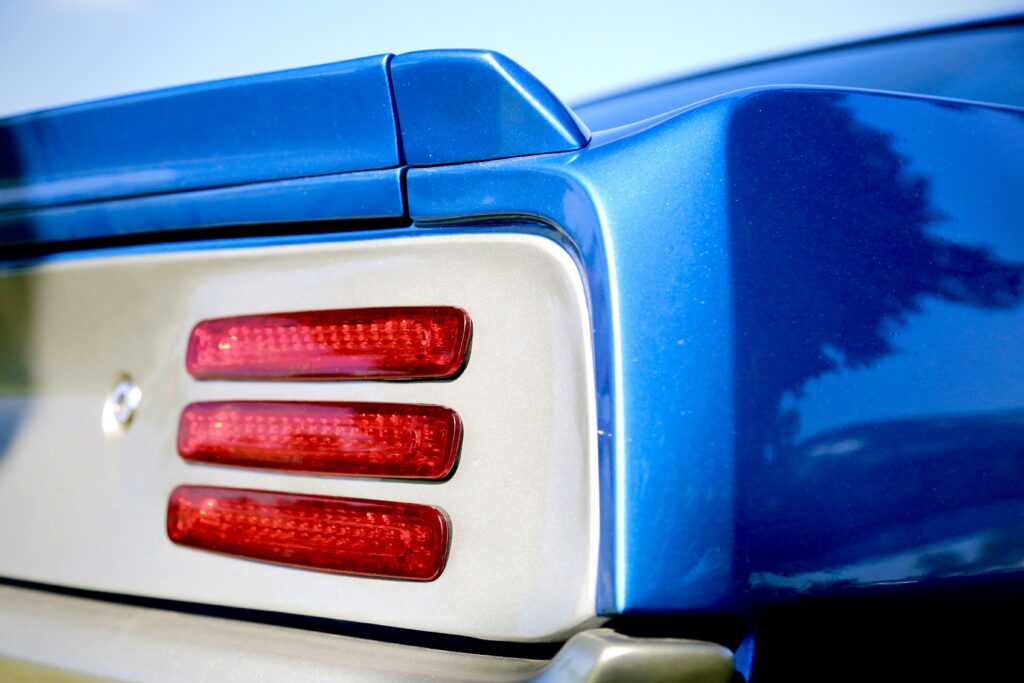
Consider mid-century modernism. The post-war economic boom paved the way for Americans to afford owning a vehicle. Drive-in movie theaters and drive-thru restaurants, banks, and car washes merged into mainstream Americana. The American landscape was rebuilt to accommodate more wheels. An ultra-stylish, mid-century masterpiece is the 1957 Chevy Bel Air. The ‘57 Chevy flexes muscle and innovative design features including a distinct chrome headlight, eye-catching tailfins, and literal golden touches like the gilded Chevrolet script adorning the hood above the grille. For decades, the ‘57 Chevy has been hunted by classic car collectors who consider it to be an auto icon.
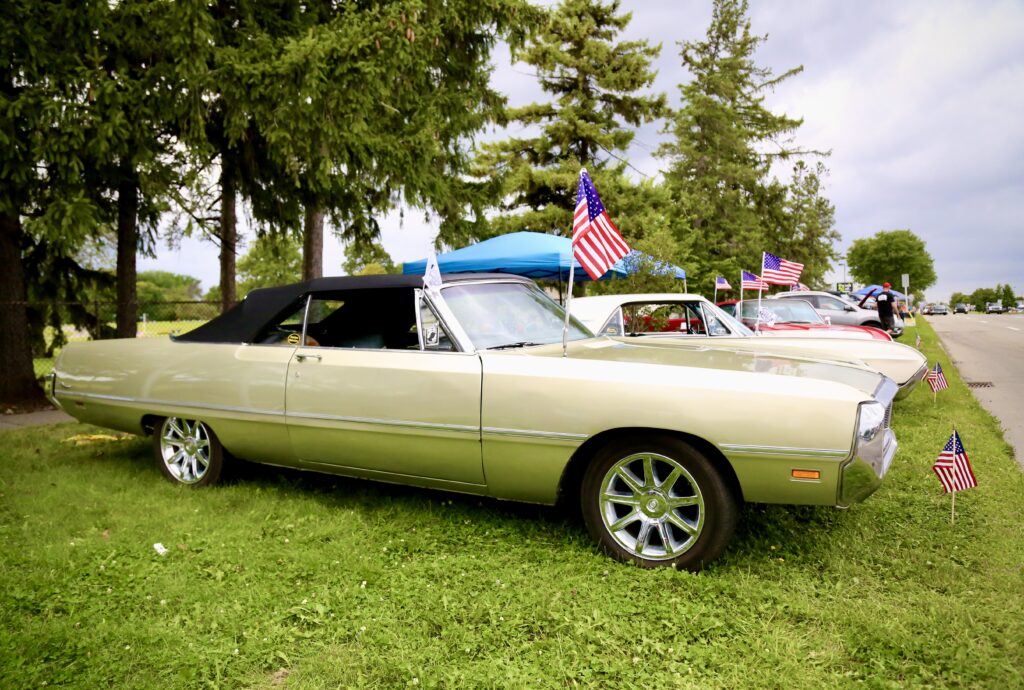
Drivers cruised as families (I spotted a pack of three adults comfortably seated up front utilizing the car’s front-row bench seat), couples, singles, packs (some drivers brought their pets along for the joy ride), and even Stormtroopers. According to Tina Strickland, she spotted a Stormtrooper driving a white Camaro in place of a four-legged AT-AT (All Terrain Armored Transport) walker with a life-sized Yoda buckled into the passenger seat. Strickland also attended the event driving a fast car but ditched the theatrics. However, she told me the story of when she was thirteen, Strickland witnessed her sister-in-law zoom into the driveway driving a brand new Frost Baby Blue Corvette. “Between 1978 and 1979, only six thousand of its kind were made,” says Strickland. Then and there, as a thirteen year old girl who couldn’t yet drive, Strickland knew she needed one of her own. “Finding one wasn’t easy. I searched and searched for ten years,” says Strickland. “I finally bought this one at auction and it barely ran.” Strickland describes the auction in rapid-fire fashion. Hundreds of cars were sold in so many minutes. Despite a decade of hunting for the Frost Baby Blue ‘79 Vette, finding replacement wheels was contrastingly effortless. “My coworker’s dad painted cars for a living and he just so happened to have 1979 Corvette wheels in their original packaging in his basement. He gave them to me,” Strickland says, sharing her luck. Whether coincidental or intergalactically cosmic, the power of having a dream car and manifesting its existence is especially real in Detroit.
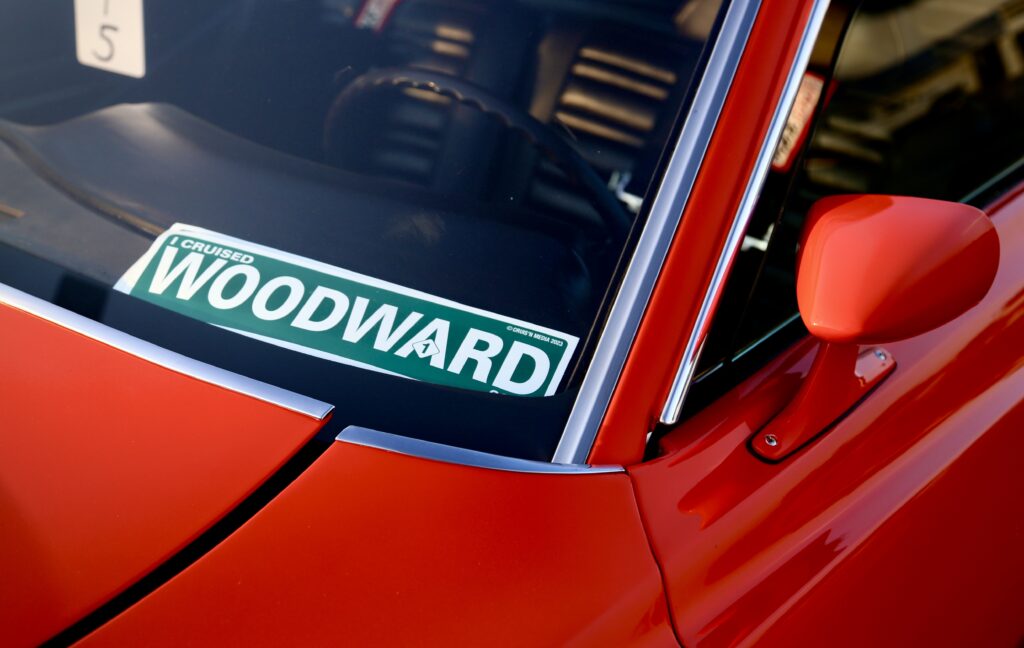
As the sun’s rays reached “E,” twilight kicked into overdrive and the evening’s celebration offered a different variety of sunset cruise. Neon signs beamed. A wave of headlights diffused into the stream of taillights glowing in the opposite direction. Packs of engines purred, stereos bumped, and the occasional breaks screeched—harmonizing into a suburban sound bath. Spectators soaked in the spectacle late into the evening, watching cars swoosh by to the night’s hum. Police cars chased the occasional speed demon while onlookers enjoyed the simple pleasure of sitting on the sidelines, watching automobiles roll by, and experiencing time rewind. In the vintage car arena, there’s a merry-go-round effect; old cars get new drivers, and between the layers of history are serendipitous moments. At times, these moments are so coincidental they sound scripted but there’s a sentimental glue welding everything together to create a unique brand of Motor City magic.
